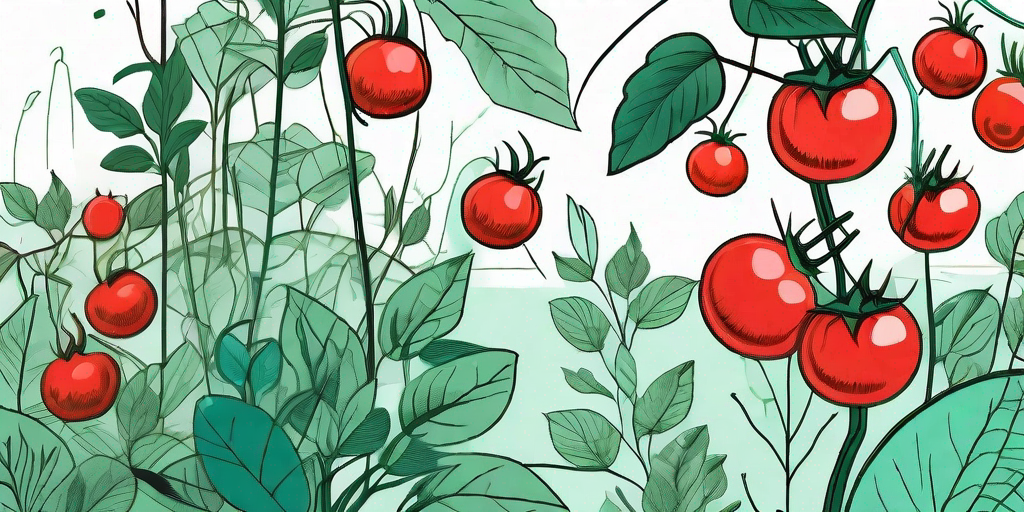
Welcome, dear reader, to the wild and wonderful world of wild tomatoes. Yes, you heard it right. Tomatoes can be wild too, and they are not just the red, round, and juicy ones you see in your local supermarket. They are the untamed, the unruly, the unexplored, the wild ones. So, buckle up as we embark on this exciting journey to discover the untamed world of wild tomatoes.
What are Wild Tomatoes?
Before we dive deep into the wilderness, let's first understand what we mean by 'wild tomatoes'. Wild tomatoes are the ancestors of the domesticated tomatoes that we are familiar with. They are the original, the OGs, the ones that started it all. They are smaller, more diverse, and come in a variety of shapes, sizes, and colors.
Wild tomatoes are native to western South America, but they have spread to other parts of the world over the centuries. They are hardy, resilient, and can thrive in a variety of environments. They are the survivalists of the tomato world, the Bear Grylls if you will.
The Diversity of Wild Tomatoes
Wild tomatoes are a diverse bunch. They come in a variety of shapes and sizes, from tiny cherry-sized ones to larger, beefsteak-like ones. They also come in a variety of colors, from the traditional red to yellow, orange, green, and even purple. Yes, purple tomatoes do exist in the wild!
But it's not just about the looks. Wild tomatoes also have a diverse range of flavors. Some are sweet, some are tangy, some are spicy, and some have a complex flavor profile that can't be easily described. It's like a flavor fiesta in your mouth.
Why Should We Care About Wild Tomatoes?
Now, you might be wondering, why should we care about wild tomatoes? Well, there are several reasons. First, they are a part of our culinary heritage. They are the ancestors of the tomatoes that we use in our cooking today. Without them, we wouldn't have the delicious tomato-based dishes that we enjoy today.
Second, wild tomatoes are a valuable source of genetic diversity. They have traits that have been lost in the process of domestication, such as resistance to pests and diseases, tolerance to harsh environmental conditions, and unique flavors. These traits can be used to improve our domesticated tomatoes and make them more resilient and flavorful.
The Role of Wild Tomatoes in Breeding
Wild tomatoes play a crucial role in tomato breeding. Breeders often cross wild tomatoes with domesticated ones to introduce new traits and improve existing ones. For example, the resistance to late blight, a devastating disease of tomatoes, was introduced from a wild tomato species.
Wild tomatoes are also used to introduce new flavors into domesticated tomatoes. For example, the 'Green Zebra' tomato, a popular heirloom variety, was developed by crossing a domesticated tomato with a wild one. The result is a tomato with a unique, zesty flavor that is a hit among tomato enthusiasts.
How to Grow Wild Tomatoes
Now that we have explored the wild world of wild tomatoes, let's learn how to grow them. Growing wild tomatoes is similar to growing domesticated ones, but there are a few differences.
First, wild tomatoes are more tolerant of harsh conditions. They can tolerate poor soil, drought, and high temperatures. This makes them ideal for growing in challenging environments where domesticated tomatoes might struggle.
Choosing the Right Variety
When it comes to growing wild tomatoes, choosing the right variety is crucial. Some varieties are more suited to certain conditions than others. For example, some varieties are more resistant to pests and diseases, while others are more tolerant of harsh environmental conditions.
It's also important to choose a variety that suits your taste. As we mentioned earlier, wild tomatoes come in a variety of flavors. Some are sweet, some are tangy, some are spicy, and some have a complex flavor profile. So, choose a variety that tickles your taste buds.
Planting and Care
Once you have chosen your variety, it's time to plant. Wild tomatoes can be started from seeds or transplants. If you are starting from seeds, sow them indoors 6-8 weeks before the last frost date. If you are using transplants, plant them outdoors after the danger of frost has passed.
Wild tomatoes require a sunny location and well-drained soil. They also require regular watering, but be careful not to overwater as this can lead to root rot. A layer of mulch around the plants can help retain moisture and suppress weeds.
FAQs about Wild Tomatoes
Are wild tomatoes edible?
Yes, wild tomatoes are edible. However, they have a different flavor profile than domesticated tomatoes. Some are sweet, some are tangy, some are spicy, and some have a complex flavor that can't be easily described.
Can I grow wild tomatoes in my garden?
Yes, you can grow wild tomatoes in your garden. They are hardy and can tolerate a variety of conditions. However, they do require a sunny location and well-drained soil.
Where can I buy wild tomato seeds?
Wild tomato seeds can be purchased from a variety of sources, including online seed catalogs, garden centers, and seed exchanges.
Conclusion
So, there you have it, a comprehensive guide to the wild and wonderful world of wild tomatoes. Whether you are a tomato enthusiast, a gardener, or just a curious reader, we hope you found this journey into the wilderness exciting and informative. So, the next time you see a tomato, remember, it's not just a fruit, it's a wild adventure waiting to be explored.
And remember, in the world of tomatoes, being wild is not a bad thing. It's a testament to resilience, diversity, and untamed beauty. So, let's celebrate the wildness, not just in tomatoes, but in ourselves as well. After all, we all have a bit of wildness in us, don't we?











